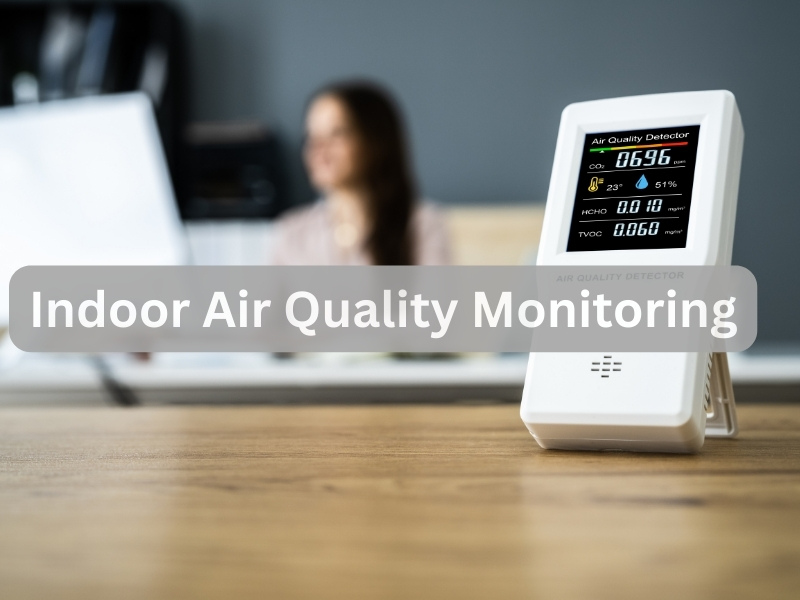Indoor air quality (IAQ) is a critical component of environmental health, yet often overlooked in discussions about pollution. With individuals spending approximately 90% of their time indoors, the quality of the air we breathe inside buildings—be it homes, offices, or other establishments—has a profound impact on our health, comfort, and productivity. As awareness of these health impacts grows, so too does the application of technology in monitoring and improving the air within our living and working spaces.
Technological Advancements in Monitoring Indoor Air Quality
Sensors and Detectors
A variety of air quality sensors are now available to detect pollutants such as carbon dioxide (CO2), volatile organic compounds (VOCs), and particulate matter (PM2.5). These sensors are pivotal in identifying unsafe levels of pollutants that are invisible to the eye but potentially harmful. With the advent of the Internet of Things (IoT), these sensors can now relay real-time air quality data to users’ smartphones or central monitoring systems, enabling prompt action when levels deviate from the norm.
Smart Home Systems
Smart home technology has revolutionized how we interact with our living spaces, integrating air quality sensors directly into home automation systems. Brands like Nest and Ecobee incorporate sensors that not only monitor IAQ but also interact with other home devices to improve it—such as activating air purifiers or adjusting ventilation when pollutant levels rise.
Wearable Technology
Wearable devices have extended beyond fitness tracking to monitor environmental conditions, offering personalized data to help users make informed decisions about their health and surroundings. These gadgets are particularly useful for vulnerable populations, such as those with respiratory conditions, providing them with timely alerts about deteriorating air quality.
Innovative Solutions for Improving Indoor Air Quality
Air Purification Technologies
Air purifiers have become increasingly sophisticated, equipped with HEPA filters that capture 99.97% of airborne particles, including pollen, dust mites, and tobacco smoke. Additionally, activated carbon filters are effective in removing gases and odors, while newer technologies, such as Photocatalytic Oxidation (PCO), offer promising results in breaking down contaminants at the molecular level.
Smart HVAC Systems
Modern HVAC systems are smarter than ever, capable of adjusting airflow based on the quality of indoor air detected by integrated sensors. These systems enhance energy efficiency while ensuring optimal air quality, automatically filtering out pollutants and maintaining comfortable indoor temperatures.
Natural and Hybrid Ventilation Systems
These systems combine mechanical elements with natural air movements to foster better air quality. By utilizing natural drivers like wind and thermal buoyancy, these systems reduce the need for mechanical cooling and heating, thereby promoting a healthier indoor environment and reducing energy consumption.
Case Studies and Real-World Applications
Residential Applications
In residential settings, smart home systems with integrated IAQ monitoring tools can significantly enhance living conditions. For example, a smart home in California uses automated sensors to manage air quality, triggering air purifiers and ventilators when pollutant levels rise, ensuring a healthy indoor environment.
Commercial Applications
In the commercial sector, buildings are increasingly equipped with advanced IAQ systems to safeguard occupant health. For instance, a hospital in New York has implemented a state-of-the-art HVAC system with real-time IAQ monitoring to ensure a sterile environment, crucial for patient care and infection control.
Industrial Applications
Industrial settings, known for their high levels of pollutants, are adopting robust air purification and monitoring systems. Factories with heavy machinery now utilize heavy-duty air purifiers and ventilators, significantly reducing workers’ exposure to harmful airborne substances.
Future Trends and Research Directions
The future of IAQ technology looks promising with ongoing advancements in sensor accuracy and a potential increase in regulatory standards. Continued research is essential to develop more sophisticated solutions tailored to different environments, enhancing public health outcomes.
The integration of technology into indoor air quality management represents a significant step forward in our ability to understand and improve the environments where we spend most of our time. While challenges remain, the path forward is clear: continued innovation and adaptation of these technologies will lead to healthier indoor spaces and, consequently, healthier lives.

